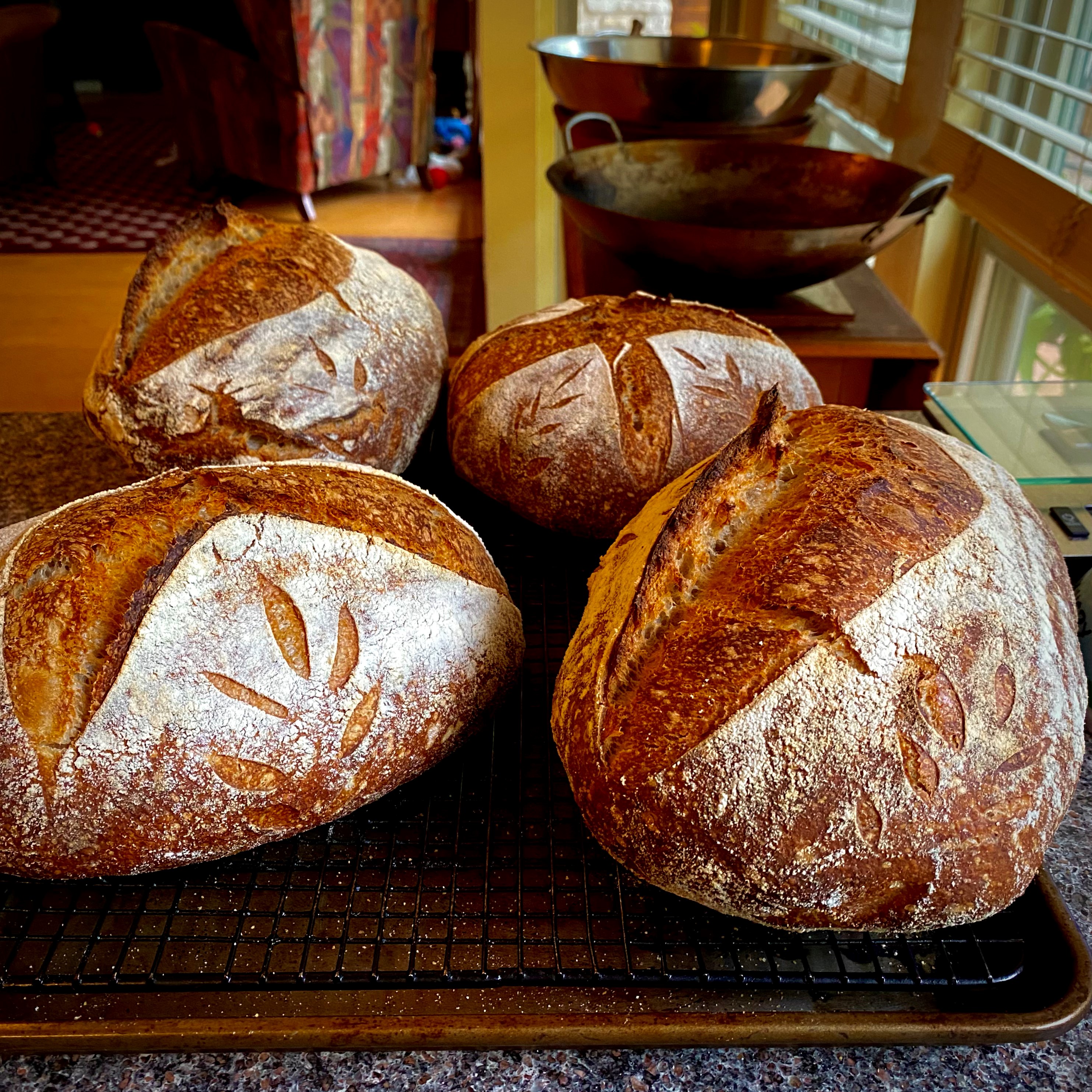20. April 2021
Sourdough Playlist

A few friends have asked about how I make my sourdough bread. I decided to put together a couple videos on the process I use which pulls from two main sources. I was inspired by a video on Food 52 and when I wanted to learn more, I found a course on Udemy.com that was fantastic.
This series walks through making one loaf. I know! It seems like a lot of work, but how amazing to create something that looks and tastes so wonderful. I take great pride in my bread, but the look on my friends faces when you gift a loaf of bread is priceless, you forget every failed loaf and the time it took to make them. There is magic in gifting bread.
I was inspired by the recipe from Food 52: Table Loaf - Food 52 This is the recipe I use for the video series. This post provides a good overview of the process and the recipe is amazing. Over the past year I have made at least 250 loaves of this bread.
I would not be half as successful making sourdough if it were not for Dragan and Penny and their Udemy.com course: Mastering Sourdough Starters & Leavens Dragan Matijevic and Penny Williams!
I am looking forward to travel again and visiting them to attend the artisan baking courses they run in Devon England. Until then, they have several highly rated courses to satisfy gluten and non-gluten bakers.
If you want more recipes, check out: Sourdough - Sarah Owens
Things you need
To start with we’ll be covering some of the tools. I have collected some “nice to haves” along the way, but you can get started with the basics and still be successful.
- White Flour AP and Bread: Get a good quality, preferably local All Purpose and Bread flour. You will need both. Start with 5 pounds each.
- Whole Wheat Flour: With a good whole wheat flour you can create your own starter.
- Clean Fresh Water: I use filtered tap water. Filtration takes out the chlorine and other stuff that retard natural yeast growth.
- Sea Salt: Any good variety will do. Don’t use iodized salt.
- Starter: You can make your own from the Whole Wheat flour above or start with any great quality, fresh, stone ground flour. This is a good process to follow: Simple Sourdough Starter. You can also ask any sourdough baker for a bit of starter to get yourself started. We are all feeding and ditching starter everyday, so it’s no bother to give a bit away.
- Scale - I use an inexpensive digital scale. The Tare function is a huge help.
Additional Tools for getting started
- Mixing bowl
- Bowl scraper
- Tea towel to cover the bowl - I use shower caps.
- Proofing bowl
- Cast Iron Dutch Oven - I think this is “required” if you want the spring and glory of a big loaf, but you can do without it. I just don’t recommend it.
Advanced Tools
- Proofing Baskets
- Scrapers
- Shower Caps
- Parchment Paper
- Peel
The Sourdough Playlist
Notes
After you review the Intro and Tools video and you decide to go forward, these notes may help.
I have found that 90% of the “problems” I have had with my starter come back to proper feeding. Feed your starter every day, period. Sure, you can let it go two days without a feed…but longer than that and bad things start to happen. You can store your starter in the fridge to slow things down, but you still must feed it regularly.
Starter “sluggish”? Feed it twice a day for a while. Starter too acidic (I found this out about mine) back off on the whole wheat or rye and just feed AP for a while. More feedings more often will promote vigorous and healthy culture (it’s more than just yeast, it’s bacteria too). The whole community needs to eat to stay strong and stave off any unwanted visitors.
If you want to make your own starter, go here: a simple starter or take Dragan and Penny’s course